 SPECIAL GUEST SPEAKER
SPECIAL GUEST SPEAKER Fruit Jar Expert, Doug Leybourne!
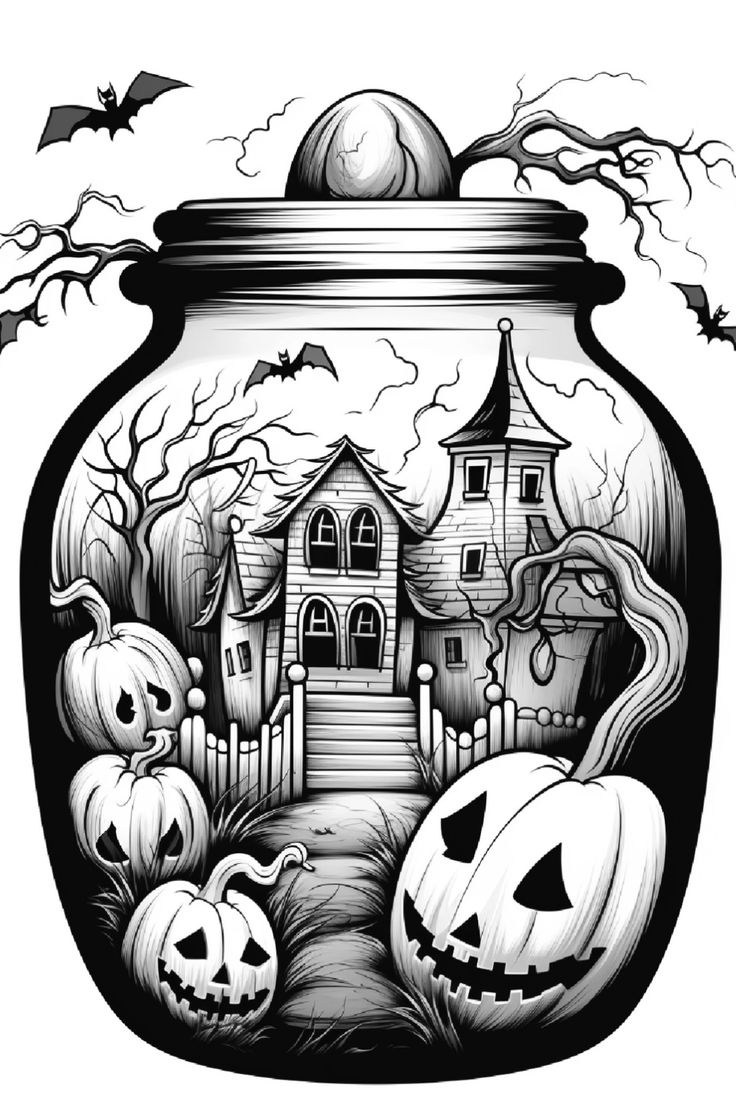
Theme This Month Fruit Jars!
If for some reason, you missed the last meeting . . well, it was different!
We were planning on a special presentation from our shinny new President, Scott Hendrichsen, who as our president, he is right-out-of-the-box and fresh-as-a-daisy! His talk was on the subject of professional bottle cleaning.
The meeting room was set up like we were about to see a theater play! And, well, that was a good thing . . . because we had a great big turnout!
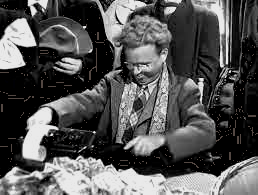 Vince
had a little spot set up on the back corner of the
room, right where everyone passed by, and he was
selling tickets! Well, actually he was collecting club
dues. . . "bringing in the sheaves."
Vince
had a little spot set up on the back corner of the
room, right where everyone passed by, and he was
selling tickets! Well, actually he was collecting club
dues. . . "bringing in the sheaves." So-help-me, he reminded me of George Bailey’s cousin, Eustace, who at the end of 'It’s a Wonderful Life' was adding up all the town-folk’s donations to help George out of his jam!
Two of the great classics of all times were; The Wizzard of OZ, and, It’s a Wonderful Life.
What made these films great was not so much what the viewer sees on their first viewing . . . but what he sees after the fifth, sixth and seventh viewing.
In the Wizard; It was that one who did all the clever thinking, who was also the one desiring a brain. In real life, a truly wise man will realize he has so much to learn!
The character who longed to be blessed with ‘courage’ was indeed, and in-a-pinch, the bravest of all four travelers.
And consider the “Heartless” Tin-Man, he without question, was the one showing both concern and compassion time-after-time. Don’t you remember how shedding those caring tears made him vulnerable to rust!
And for just a moment consider ‘It’s a Wonderful Life.’ That movie is full of thought provoking material! But, without question, both movies call the viewer to consider how much each of our lives has an effect on the other. And, they both call each of us to see the good and special importance that can be found in each other.
Last month’s meeting

It was a special night for the club. We had a chance to see
Scott Hendrichsen step up to the plate and conduct business as
our brand-new, sparkling-clean, club president . . . and fearless leader.
Without question, we were all impressed with his antique bottle
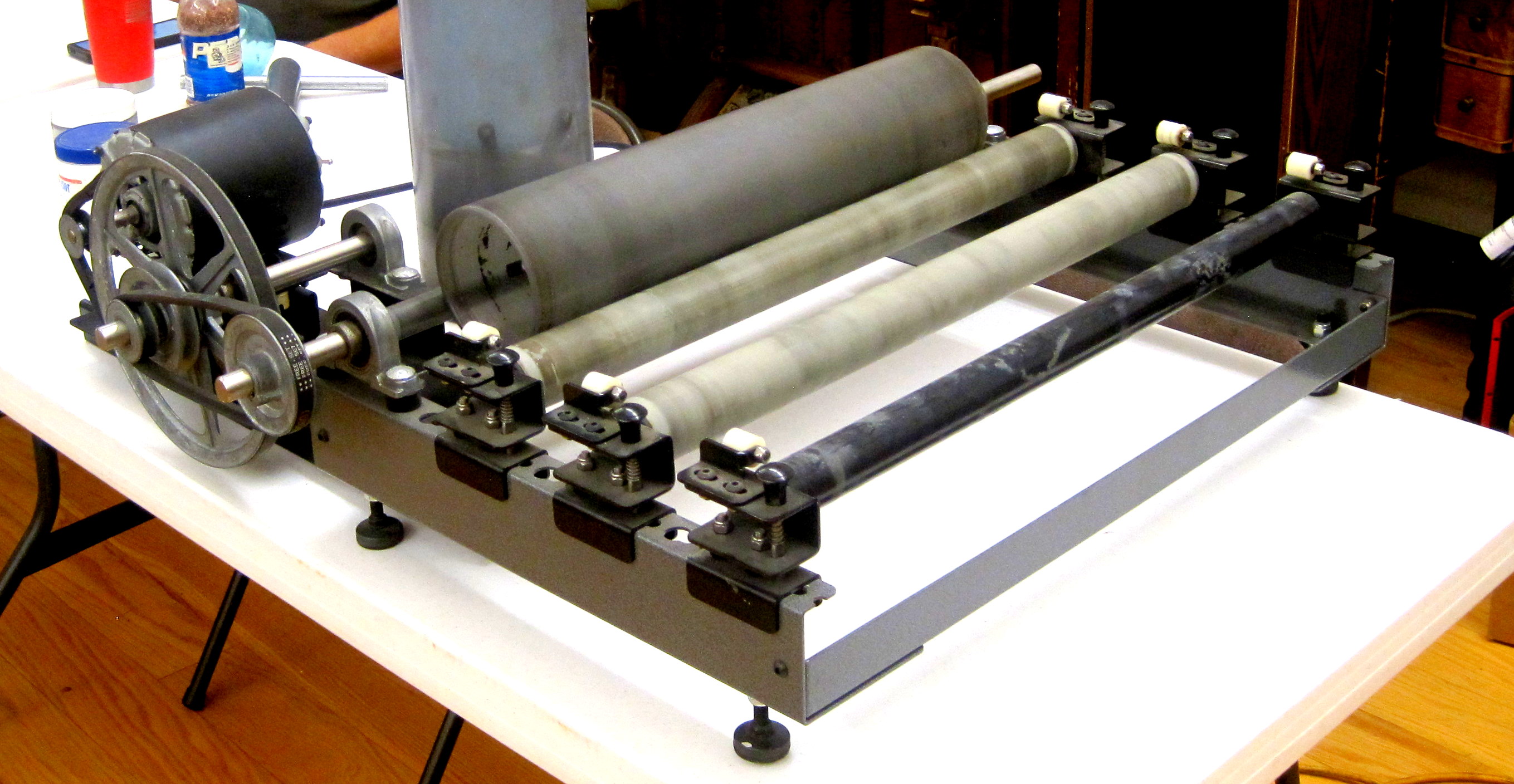 cleaning factory! Scott
shared with us, each step required to turn a
urine-etched dull-frosted bottle into a sparkling
like-new gem!
cleaning factory! Scott
shared with us, each step required to turn a
urine-etched dull-frosted bottle into a sparkling
like-new gem!I made my own bottle tumbler polisher with some parts I had laying around, kinda crude but it worked! I had some smart advice from Mark Churchill who had been cleaning bottles for years. I remember when he was living in Kalamazoo I had the chance of seeing his operation in action . . . it was very impressive!
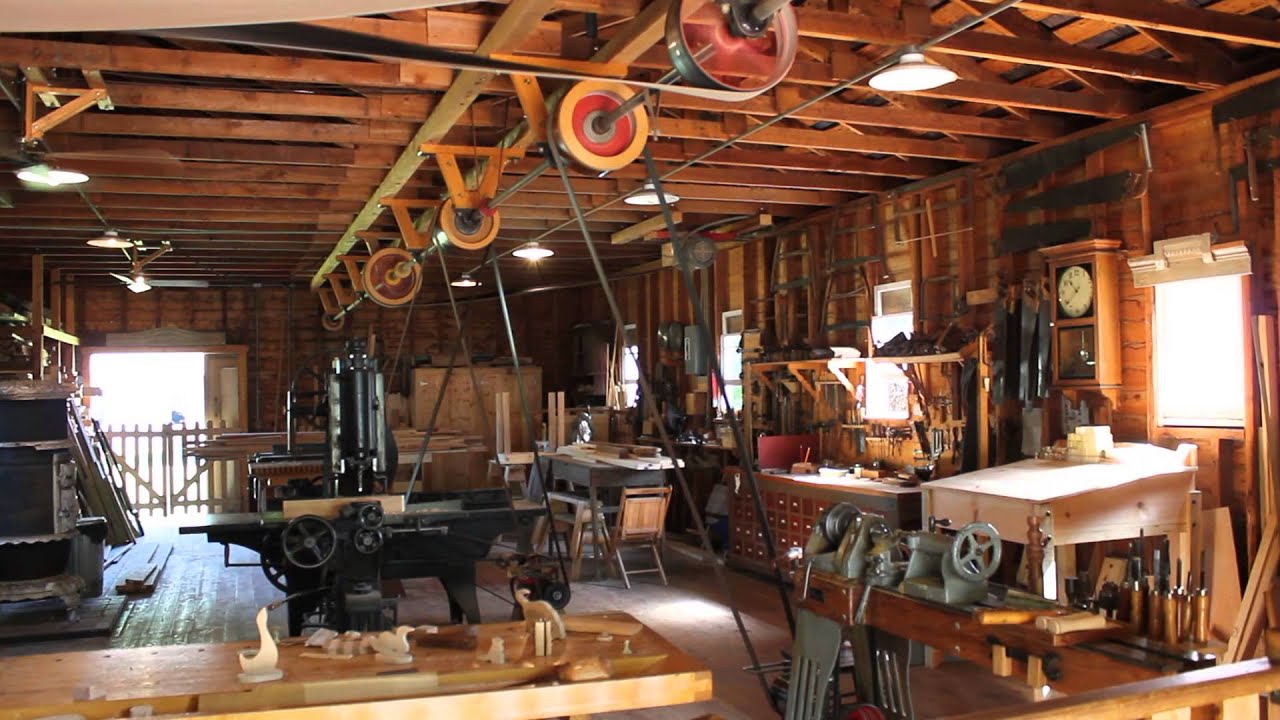 Scott's
machine reminded me of a guy I once knew, in the
Allegan area, with a vast (antique) machine shop. It
was all equipped with 1800's and early 1900 lathes,
drill presses and milling machines . . . all run by a
single power source!
Scott's
machine reminded me of a guy I once knew, in the
Allegan area, with a vast (antique) machine shop. It
was all equipped with 1800's and early 1900 lathes,
drill presses and milling machines . . . all run by a
single power source!His whole shop was powered from overhead belt driven shafts! It was the coolest setup! That’s what these bottle polishing machines reminded me of.
Scott’s machine can have bottles turning in every stage of polishing . . from one source of power.
Scott’s ‘Jar Doctor’ system handles several tumbling stages and grit solutions, all at the same time.
Scott explained that most bottle cleaning is done in three steps depending on the condition of the bottle.
With a badly etched bottle, you may want to start out with a medium solution, them move on to a abrasive called pre-polish and the last stem is the final polish.
What Scott recommends is a clipped copper (Like cut copper romex wire) to act as the media that rubs the polish onto the bottle.
Scott explained that even though the machine is sometimes called a “Tumbler” the only thing actually tumbling is the water, the copper clippings and the polish.
The bottle is held stationary, as it is suspended in the barrel and turns at the same RPM as the barrel.
Inside the barrel there is a V-shaped (three or four-pronged) holder to support the bottle’s base. Then, on the top, or the opening side of the bottle, there is a single funnel shaped stopper inserted into the bottle’s opening to hold the bottle stationary at that end.
Scott told us the trick is to allow a good ‘tumbling action’ so that the clipped copper can freely move and work like little hands applying the polish.
Too much of anything is a bad idea. Too much water ruins the cleaning action, as will too much copper. . . or even too much polish.
The inside of the bottle is only filled about one third full with clippings, and only about ½ tea spoon of polish. Then you add just enough water to cover the copper clippings by only about ½ inch over.
This will allow for the right amount of air needed to provide a good tumbling action.
Outside the bottle, (in the tumbler barrel), we do much the same thing. Add enough copper clippings to come up about to ½ of the bottle sides, add water to just cover the copper clippings (by about one inch) and add the polishing powder.
Call me cheap, but, I found that I get good results using half the polish they tell you to use.
I found out that the coarse grit isn’t often needed. I had a badly stained and frosted pepper-sauce bottle which I ran for a couple days with a coarse grit (500 grit). I was new at the bottle cleaning, so I was like a kid at Christmas . . . I had to take a peek! Well, I am glad I did! This bottle was nearly ruined because it didn’t need that course media!
In fact, most ‘coarse’ is used in rock polishing for shaping and to knock down the high points.
In my somewhat limited experience, I would start with coarse-grit for “sick glass” which is 1000 grit silicon carbide. It may take a day or two longer, but taking your time it is better than knocking down your embossing or ruining a bottle. The final last stage is aluminum oxide polish which is almost like baby powder.
I haven’t run one of my polishing machines since I moved into my present store location, about 7 years ago.
Do you remember when 7 years was a long time?
When I moved, most of my non-essentials ended up in the building's basement for storage.
To provide you with some degree of accuracy for the newsletter, I hunted up a canister of polish and carried it up to my office.
It was a container of super-fine Aluminum Oxide polish that was still unopened and purchased from the Jar Doctor.
The plastic containers they used are not heavy duty! The dry powder, over time, made the plastic carton as brittle as rice chips! I went to lift it up to set it up on my desk, and the sides collapsed leaving a pile of white powder on the carpet! ULTRA FINE WHITE POWDER!
I scooped up as much as possible. And what was left in the carpet, I used my shop vacuum to pull up . . as much as possible. When I went to put the vacuum back, I could bearly see across the room! What wasn’t in the air. . . was in my lungs! And, my vacuum has a micron filter!!!
So, what have we learned Mr.
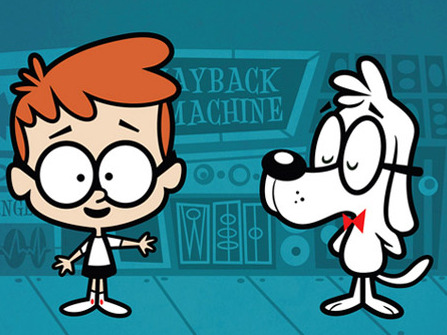 Peabody?
Peabody?Clearly, the number one lesson here Sherman, is keep your powder dry and stored in an
old-school metal coffee can!
One thing that is very important between media clean-up is. . . . do not dump this sludge down a sink! It turns into rock!
Between changing grit compound, I put my bottle into a gold panner’s ½ inch hole relic-and- gem-sieve. I buy mine at
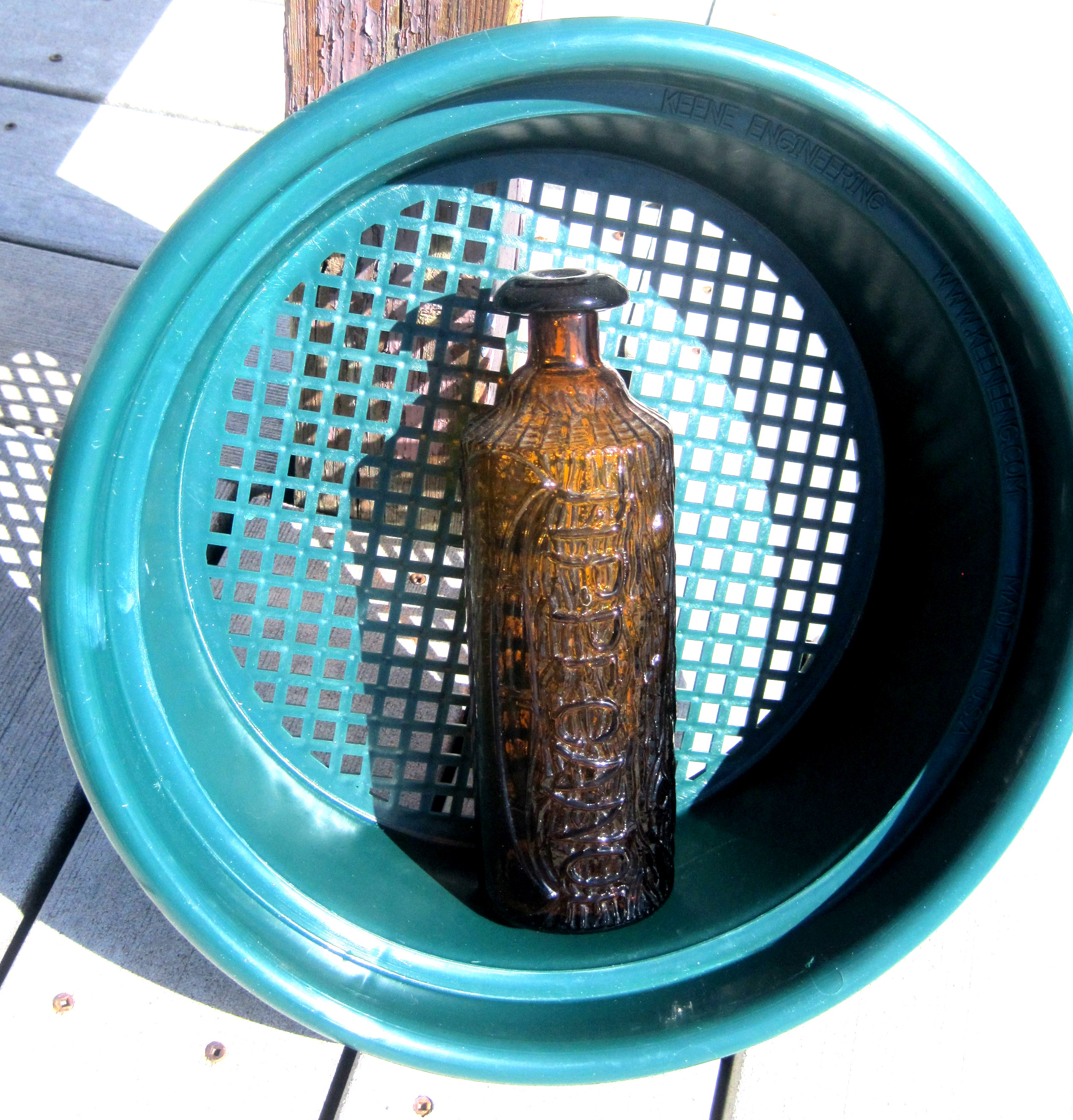
Pro Stock Metal Detectors. . .
These plastic sieves are strong, they are made to dump rocks into, yet they won’t hurt the glass. Next, I go after them with the spray-hose out in the yard. The whole idea is to flush out every tiny speck of the course grit before moving onto the fine!
I also have another, much finer #30 (30 holes per square inch) gold panner sieve, to dump my copper into, so I can also clean it real-good, flushing it
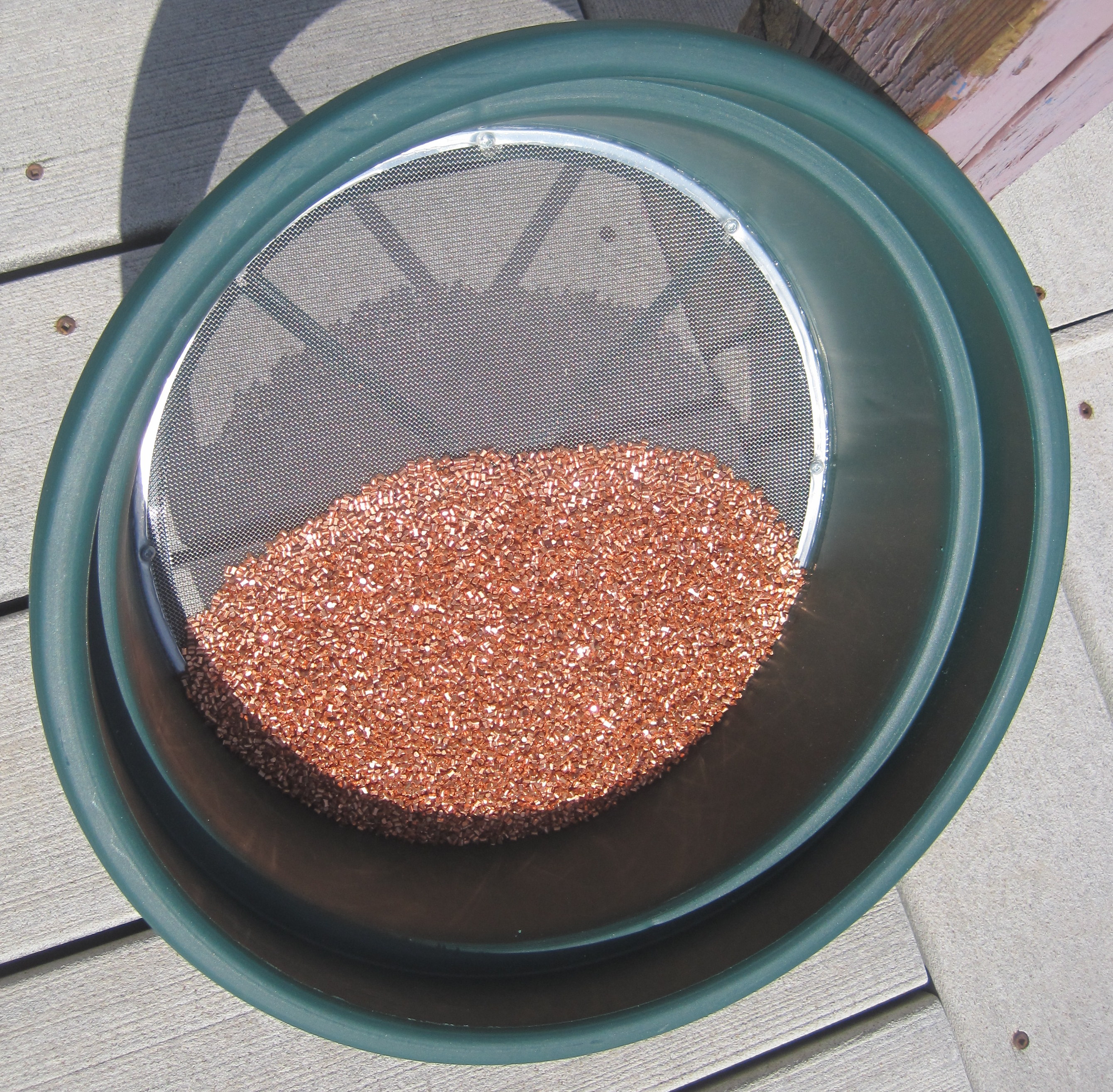 thoroughly with a hose .
. as I stir it around with my hand. You want it
clean-clean-clean!
thoroughly with a hose .
. as I stir it around with my hand. You want it
clean-clean-clean!Someone asked if there was a good way to clean a bottle without all the fancy equipment?
The answer is YES!
The exterior of most any bottle can be cleaned
by-hand in the same fashion! Instead of using clipped copper, you use your hands with a little powdered soap . . . and a Scotch Brite pad.
I learned about Scotch Bright pads in Auto Body class in college, so they have been around for a coon’s age . . . and I love them!
They also come in different degree of coarseness. I use the darker maroon pads (NOT FOR GLASS) for heavy metal work, and on cleaning rusty gasket surfaces.
To work on glass, green is pre-polish and blue is polish. Stick with blue for most glass applications. I also use them to apply some auto finish cleaner- pre-polish (to glass not a car finish). Finally, I use a shop rag with some automotive finishing polish and buff it to a sparkling shine.
If you follow the high-end collector auctions, like John Pastor’s, American Glass Gallery, or the Heckler Auctions, you will occasionally read in the description “Some mild interior staining,” Usually that is a sign the bottle was too nice to risk cleaning, or the owner decided it wasn’t a big distraction to either the looks or the value.
But, interior stains can be worked on, even if the bottle has a paper or painted label.
Actually, Kevin Siegfried was passing out bags of copper shot, or BB’s, at the meeting and I was surprised how few took some home. Maybe we can get him to bring them back.
Every bottle collector should keep some around! They can be used and used and reused again and again!
Interior cleaning by hand isn’t much different than tumbling but you provide the motion. Jerry Lee Lewis put it best when he sang,
“Come on over baby, whole lotta shakin going on! I said shake-it-baby-shake it!”
Yes, the BB’s go in, then half the bottle is filled with water, along with a pinch of powdered cleanser. Next, use a cork (or your thumb) . . . and shake it baby shake it . . keep this up through three episodes of
Sponge Bob Square Pants . . . drain and rinse.
You will discover the truth in Scott’s frequently used comment when cleaning,
 “You will see what can be,
“You will see what can be,unburdened by what has been.”
Thankfully I have some notes Vincent sent my way, about the September and October meeting.
First of all, Vince wants to thank everyone for a great September meeting!
See, I told you! We had a great meeting! I don't just make this stuff up!
The only thing I can think of to make life better is; don’t let Vince near that gavel again! He nearly broke the table and gave me a heart attack! I may need a pacemaker going forward!
THIS MONTH!
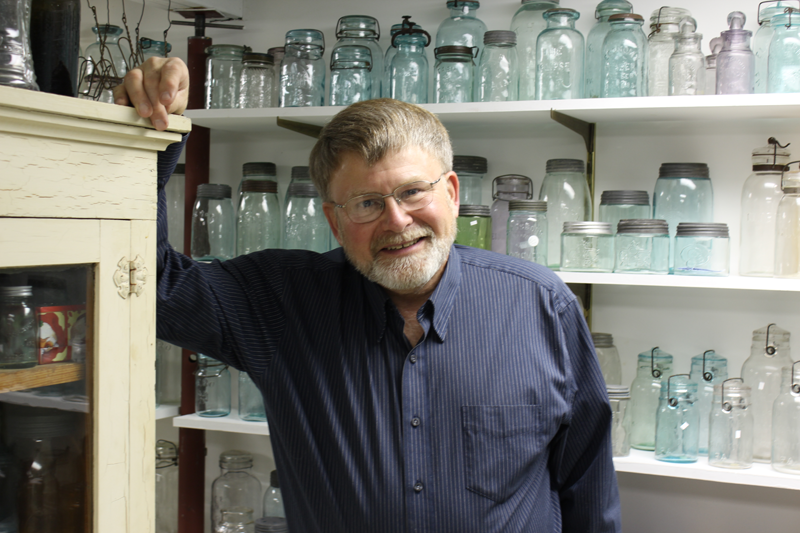 The
next meeting on October 8th , my very good
friend, Doug
Leybourne, from the
The
next meeting on October 8th , my very good
friend, Doug
Leybourne, from the West Michigan Bottle Club, Doug will be giving a presentation on Fruit Jars (Ball & Mason). Please, everyone bring your mason jars to the event.
We didn’t have much luck canning our tomatoes this year but we were able to process 6 quarts of tomato worms!
Vince has us climbing into the club’s time machine and going way ahead to the future!
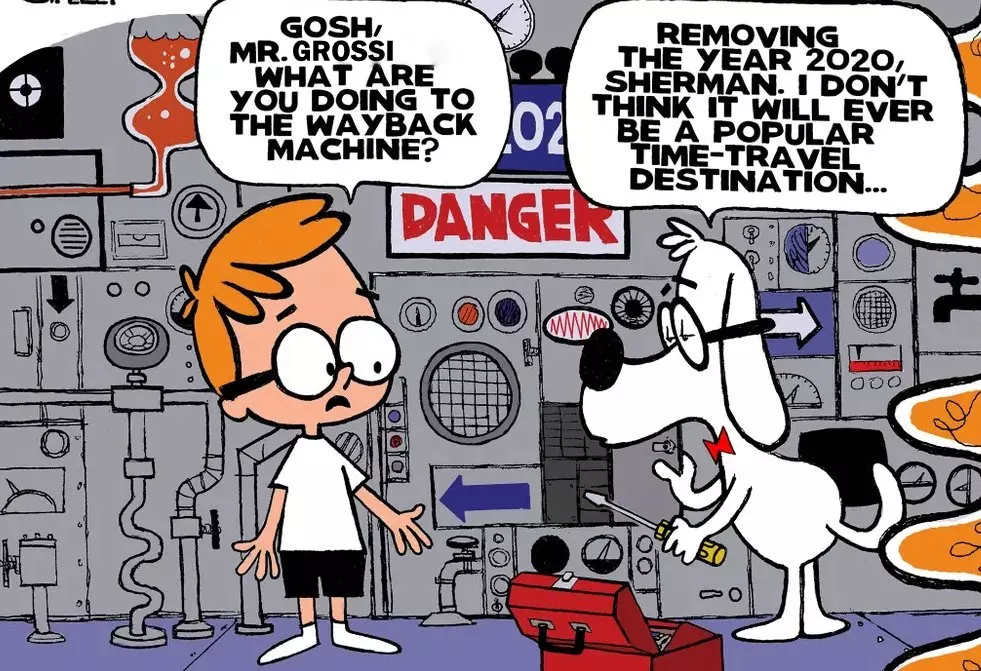 The Kalamazoo's
44th Annual Antique Bottle & Glass Show:
The Kalamazoo's
44th Annual Antique Bottle & Glass Show:Is scheduled for Saturday: April 5, 2025 at the Kalamazoo County Fairgrounds(Inside Expo Center Room A) 2900 Lake Street, Exit 80, Off I-94, Kalamazoo, MI. For Information Contact: Show Chairman Vincent Grossi:(Show Email): oldglass1850@juno.com or Club President Scott Hendrichsen: 269-377-6089.
Thanks to all those who stepped to the plate with your club dues payment’s!!
For those who haven’t yet renewed your Kalamazoo Antique Bottle Club Membership we will be happy to put you on the paid list.
Make Checks and Money Orders Payable to:
"K.A.B.C." Mail Payments to:
Len Sheaffer, 665 Lake 16 Drive
Allegan, Michigan 49010.
For More Information Call: Len Sheaffer 269-512-2640
Also remember to
bring those bottles for the $Five Dollar$ Tables Too!
Vincent.
I was looking back to some past October newsletters reminiscing, when I stumbled onto this story from our October 2012 newsletter.
Vernor’s Ginger Ale
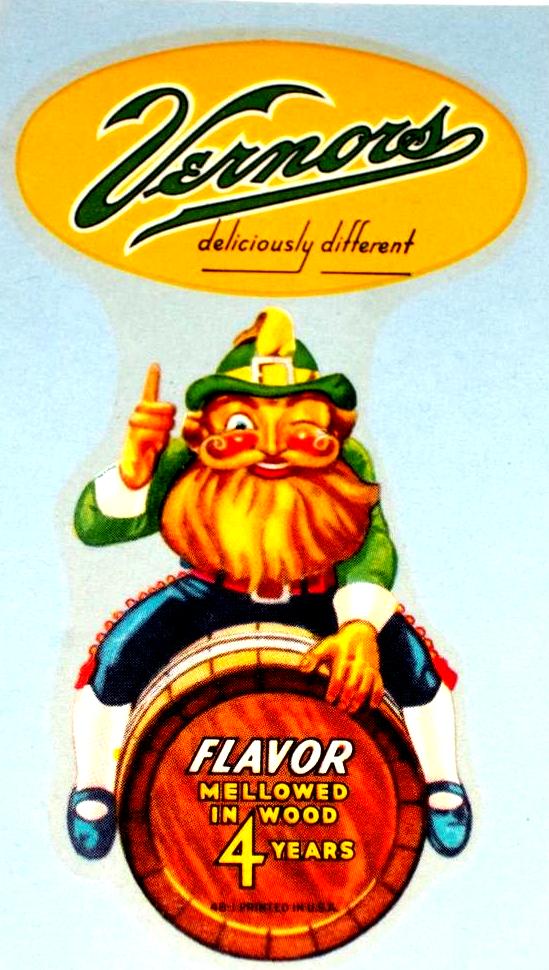 The American Civil
War had a great deal to do with the beginning of
Vernor’s Ginger Ale. Even before the first fighting
started, James
Vernor, a Detroit pharmacist, had been
working on a new medicinal potion “which was going to
be beneficial to
all mankind.”
The American Civil
War had a great deal to do with the beginning of
Vernor’s Ginger Ale. Even before the first fighting
started, James
Vernor, a Detroit pharmacist, had been
working on a new medicinal potion “which was going to
be beneficial to
all mankind.”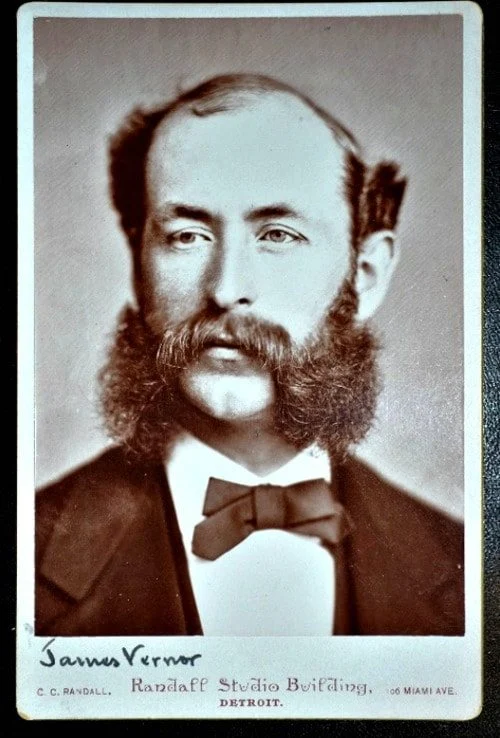
I’m not so sure that he had any idea that, while he was away serving the Union Army, he and Father Time were concocting a new wonderful soft drink!
When James was called off to war in 1862, he left a stored batch of his experimental, very secret mixture in an oak cask in his pharmacy.
After returning from battle, four years later, he opened his secret keg and found the drink inside had been transformed! It had taken on a zippy, zesty, gingery yet creamy flavor. It was like nothing else he had ever tasted.
(Now, if it had been me, I would have forgotten to write the formula down, or forgotten where I put my notes! Very likely I would have survived the war because when I was 18, I was so skinny I could hide behind any tree!)
For years, the only place anyone could buy a Vernor’s Soda was from the fountain in James Vernor's pharmacy at 235 Woodward Ave. in downtown Detroit. But, the demand for the drink continued to grow and soon, soda fountains throughout the city began selling cold, carbonated Vernor’s.
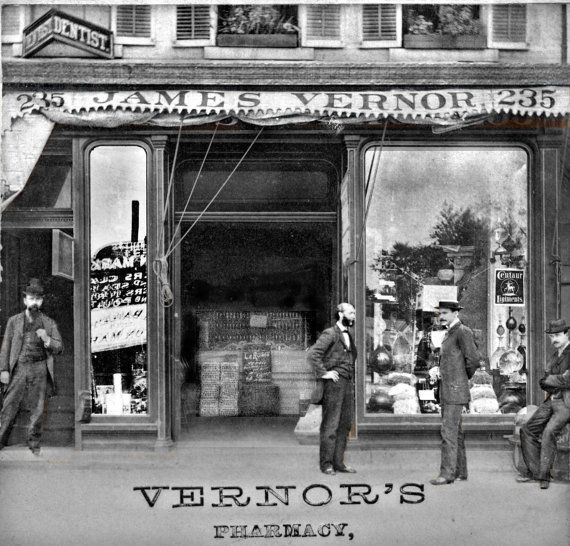
My grandfather had developed a great product in Michigan Cottage Cheese and just like him, James Vernor kept an ever-watchful eye on the his Vernor’s! Maintaining the quality of his product meant everything and he was a fanatic.
Vernor's personal scrapbook from back in the early days contains many of the pamphlets he sent to soda fountain owners. Those pamphlets "laid down the law" on how Vernor's should “and should not” be served.
Vernor also worked with soft drink manufacturers to make their dispensing machines more practical and affordable.
By 1896, the blossoming popularity of his drink led Vernor to establish his own soda fountain manufacturing!
In the years that followed, Vernor’s became available in Buffalo, Toledo, Cleveland and Niagara Falls.
A soda fountain owner who wrote to Vernor in 1898 noted that the ginger soda had acquired an enthusiastic following in his city. "Its purity, delicacy of flavor and great refreshing powers have been testified to by thousands of our soda customers."
In time, The Vernor's Company opened a landmark bottling operation in downtown Detroit to handle its expanding business.
John Pastor tells the story about how he sent his friend, Norm Heckler a case of Vernor's in Woodstock Valley, CT, because he learned that Norm is a ginger ale lover.
Well, to a ginger ale lover, Vernor’s is an acquired taste. Meaning all ginger ale is not created equal! Something about the aged in oak barrels for four years made the flavor a slightly softer, creamer, vanilla flavor.
It wasn’t the same taste that Norm was used to . . . so he dumped it out!
The labels no longer boasts “4 years” and now they just say “Barrel Aged.”
I was told by the area bottler that the only part that is aged is the ingredient referred to as “Natural Flavoring” and the same flavoring is used in both regular and diet,
As many people know, I love diet Vernors! But, the local bottler grinds my gears! (That’s why we had words) They are forever having sales! Frequently it is “Buy Two, Get Three Free.”
The current bottler is '7-Up' out of Holland, Mi. and those sales include all of their products. Seven-Up, Doctor Pepper, Squirt, and of course Vernor’s.
Well, I work days, and, I shop after work. By the time I get to the local market, all the product is still on the shelf except the big empty space where the diet Vernor’s belongs! Gurrrr!
One time, I was down in the middle of Illinois, (Normal Illinois), to a dealer conference.
After the first day of meetings I left the hotel and drove to a big party store. They had a giant wall-to-wall cooler filled with soda . . . no Vernors? I ask the clerk, “Do you have any Vernor’s Ginger Ale?” She replied, “I never heard of it.”
I replied, “That’s not Normal.”
As the old Gospel song says, “Count your many blessings, name-them-one-by- one, count your many blessings . . . see what God as done!
There will be a $5.00 Table!
The Kalamazoo Antique Bottle Club
Meets At the
Otsego Historic Society Museum

at 7:00 pm
The Museum is located at 218 N. Farmer St. Otsego, MI
Meeting starts at 7:00
Information

